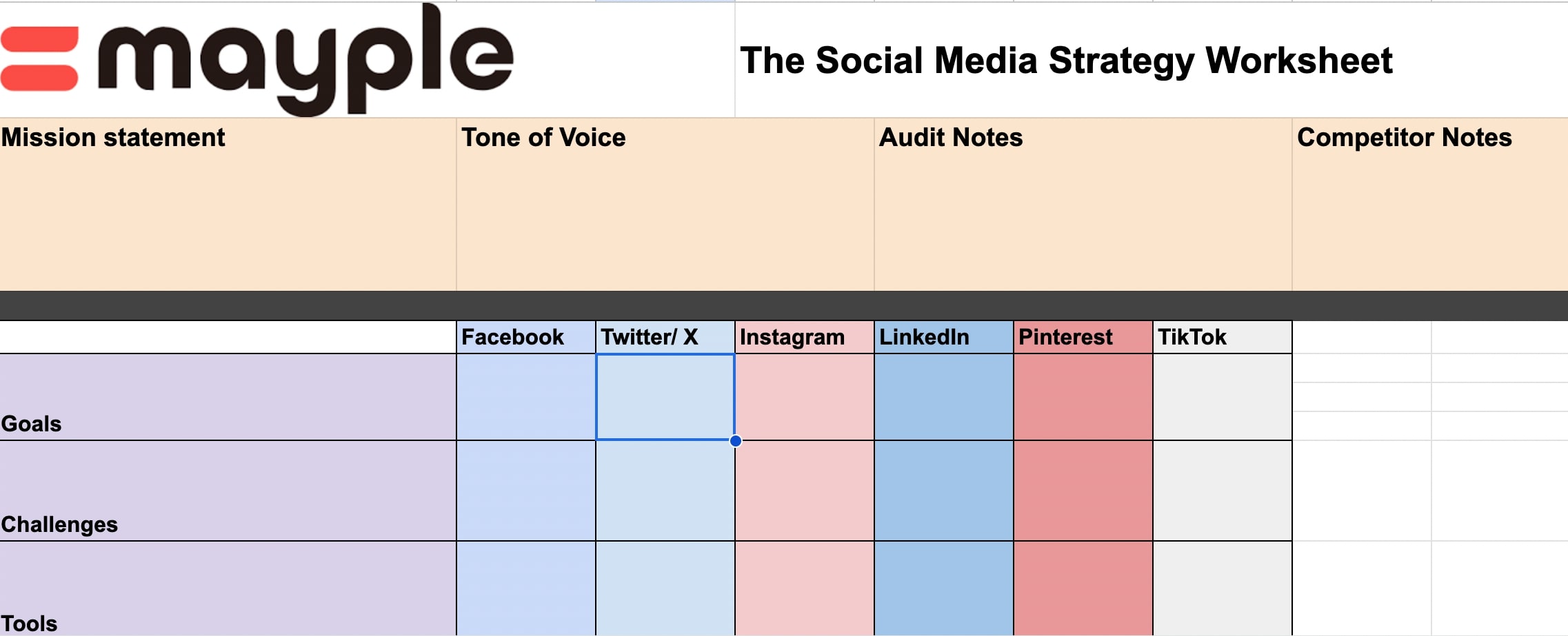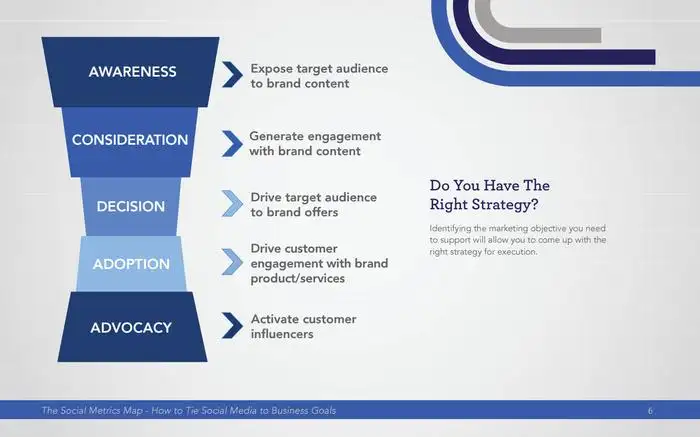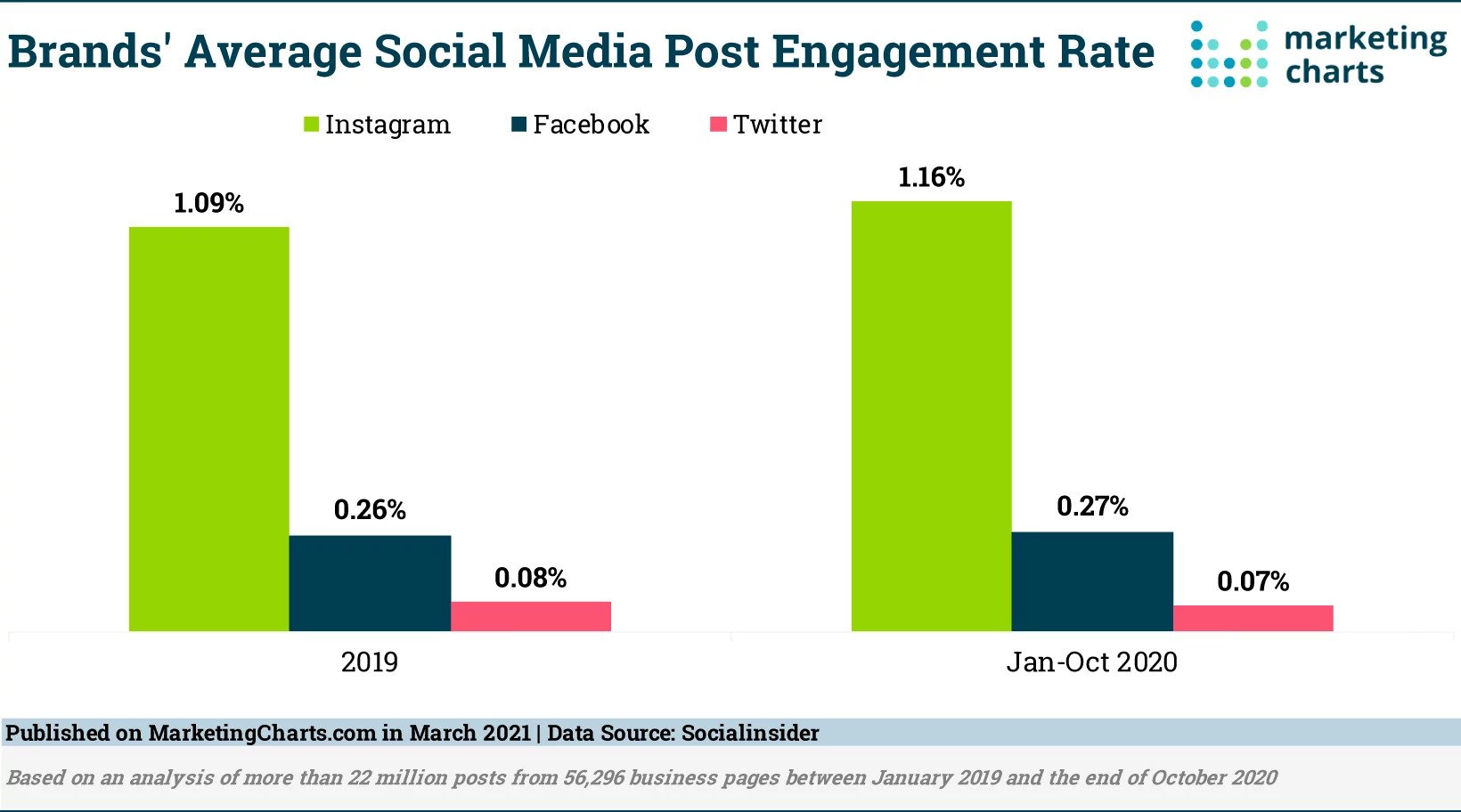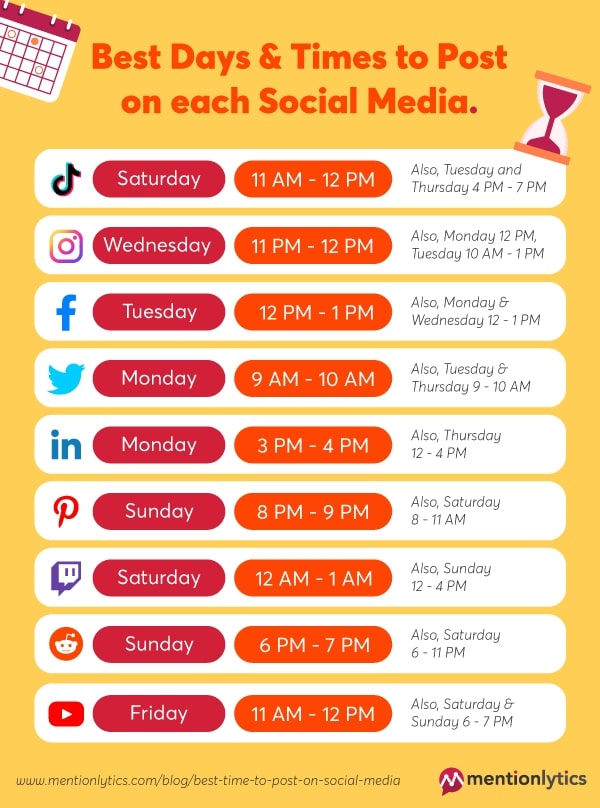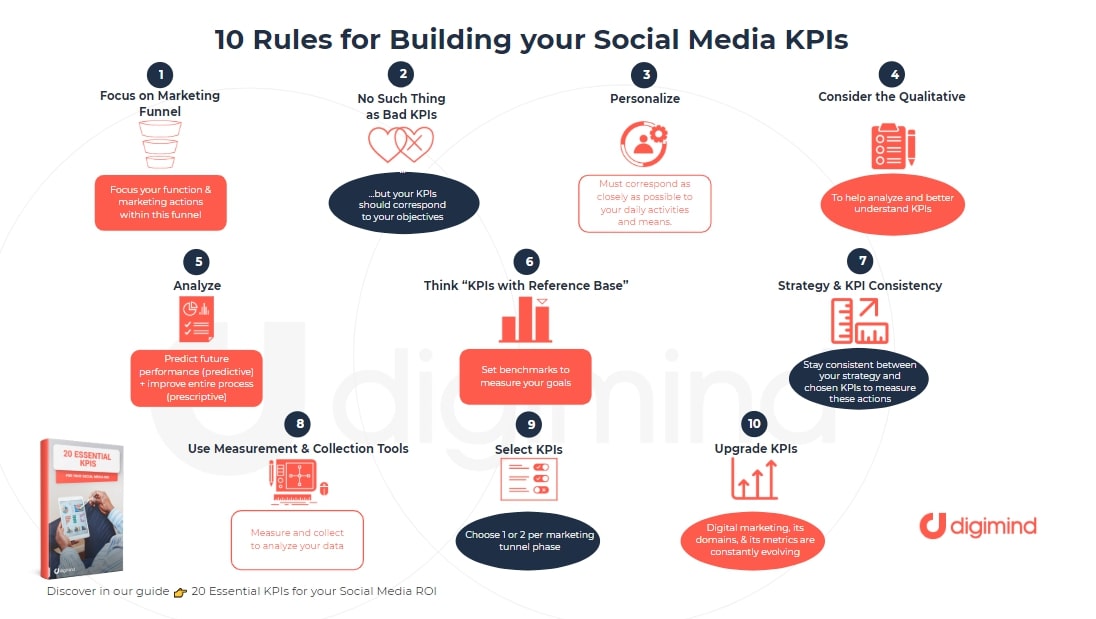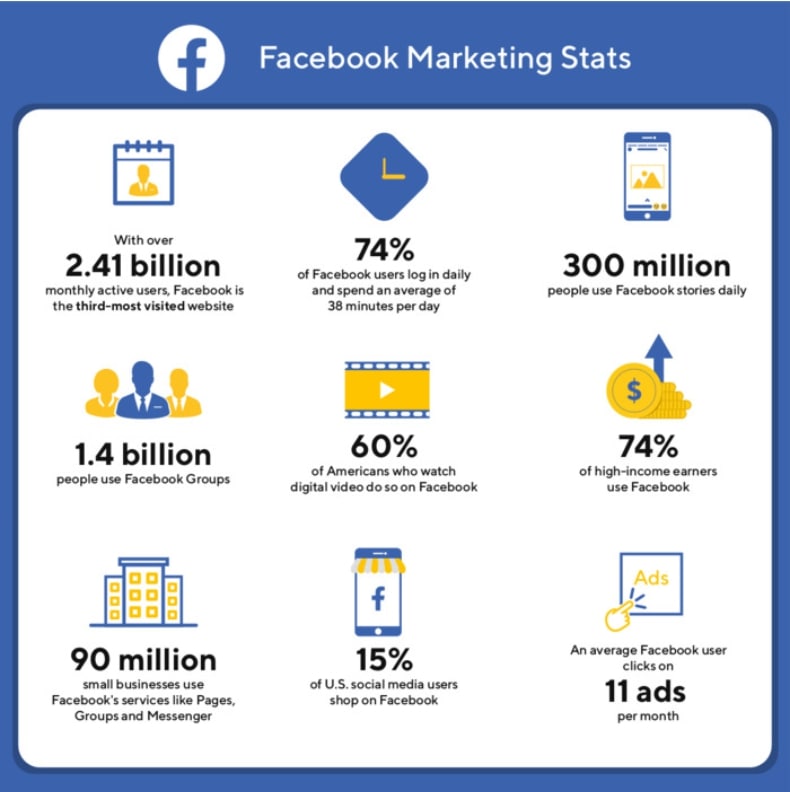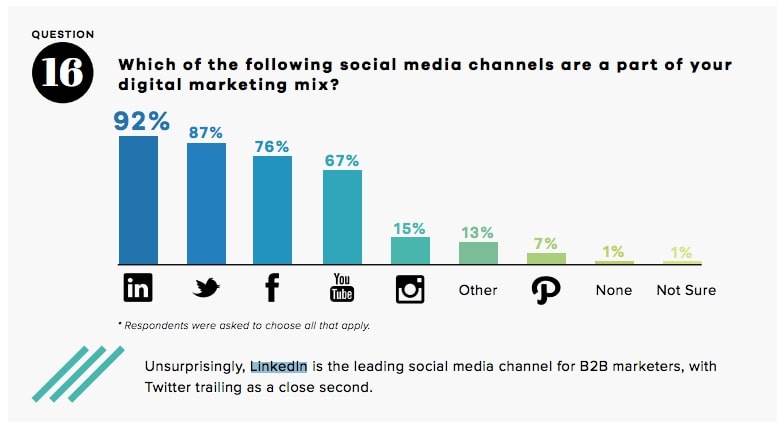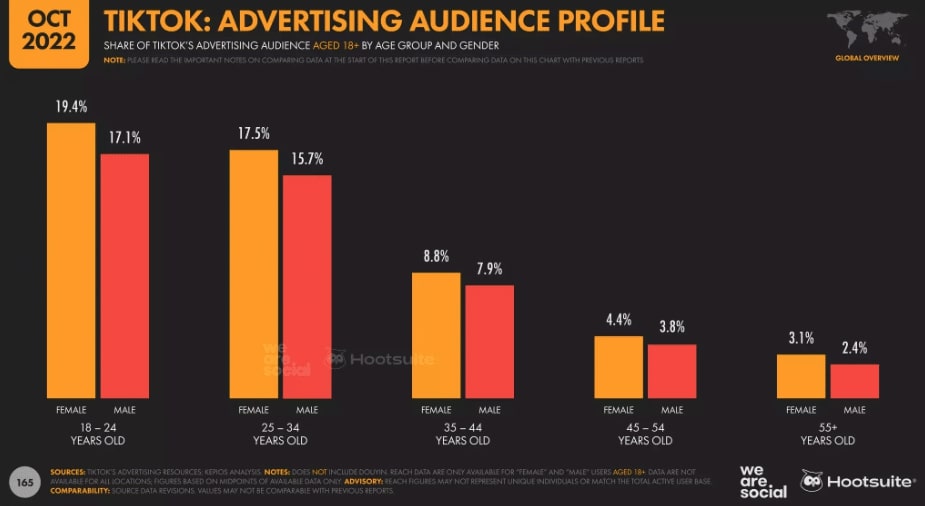Free Social Media Strategy Worksheet For Any Platform 2025
Whether you're a beginner to social media for business, or you're a seasoned marketer looking to up your game, our social media strategy worksheet is a great resource. Check it out (before the competition does!)
Updated November 6, 2024.

What is social media marketing?
Social media marketing is a digital marketing branch that uses social media platforms and websites to engage with a business's target customers, drive feedback and support, as well as promote products and services.
Broadly, social media marketing includes both organic and paid efforts. However, since paid social media is a monster in its own category, we will only be discussing organic social media for the purpose of this guide.
Here's a separate guide, if you want to learn more about social media advertising.
What is a social media marketing strategy?
Many people mistakenly think a social media marketing strategy is the same as social media tactics. The error is easy to understand: both components are about using social media.
However, a social media strategy is a comprehensive action plan that outlines the business objectives, target customers, and tactics to be used on different social media platforms. It includes the various tactics that will be used to achieve the business goals discussed in the strategy.
In this step-by-step guide, we will provide you with all the information you need to create a social media marketing plan from scratch. This guide explains how to deal with every element you need to build and elevate your social media presence.
Plus, based on this comprehensive guide, we've also created a social media strategy template you can access and use 100% free of charge. Just click here, copy the spreadsheet, and use it as you please. The document includes:
- A social media strategy template/ worksheet
- A content calendar template
- A buyer persona builder
- A social media audit template
- A competitor analysis template for social media
How to write a mission statement for your social media
Mission statements get frequently overlooked, but they are a significant element of strong social media strategies.
Your business' mission statement should be short, specific, and to the point. It should answer the question "What is your business trying to achieve on social media?" Take this as your guiding statement, your North Star in everything you do on social platforms.
Here are some quick tips on how to write a comprehensive, compelling, and effective mission statement:
- Start with your business's overall goals and objectives.
- Identify your target customers and their needs.
- Determine the unique value proposition of your brand.
- Keep it concise, memorable, and inspiring.
- Make sure it aligns with your brand's voice and values.
A simple template for a social media mission statement would be:
"We are [business name], using social media to [specific goal or objective] for [target audience] by providing [unique value proposition]."
How to choose your goals
You'll never know if your social media strategy works if you don't have goals to measure against. As such, setting the goals for your strategy is a crucial place to start. Here are some important tips to keep in mind when choosing your social media goals:
SMART goals
The SMART goal framework is a well-known model for setting goals:
- Specific: For example, "increase engagement" is vague; get clear about how much you want to increase it.
- Measurable: Not all social media goals are measurable so try to find adequate metrics for each goal where possible.
- Achievable: There's no point in setting yourself up for failure – set attainable goals.
- Realistic: Make sure you have the necessary resources and capabilities to reach your goals.
- Time-bound: Setting a deadline for achieving your goals will help drive action and measure success.
Using this framework will help you make sure your goals are clear and achievable. For example, instead of setting a goal to "increase brand awareness," set a SMART goal like "gain 500 new followers on Instagram within the next three months."
Align goals, metrics, and buyer’s journey
Social media goals don't exist in a bubble. They need to be correlated with the buyer's journey and specific metrics that measure success. Whether your goal is to increase brand awareness, drive website traffic, or generate leads, ensure it aligns with the stage of the buyer's journey and can be measured by a relevant metric.
(Source)
Examples of goals
Although not exhaustive, the following list of social media goals tends to provide a good starting point for many businesses and social media marketing agencies:
- Site traffic
- Brand awareness
- Engagement
- Leads
- Community
- Customer support
Learn more about your audience
No matter what trends, tactics, or platforms come and go, one thing remains constant: knowing your audience details is key to success in social media marketing.
By understanding your target audience's demographics, interests, behaviors, and preferences, you can create content that resonates with them and drives results. Here are a few ways to learn more about your audience:
- Age: What are the most likely age groups to engage with your brand on socials?
- Location: Where does your ideal customer live?
- Income: How much do they make?
- Jobs: What is their profession or trade? Are they mainly self-starters or do they have higher education?
- Interests: What are likely their interests, hobbies, and passions?
- Behaviors: How do they behave online? What type of content do they engage with?
- Preferences: What kind of content do they prefer to see on social media, in general, and from your brand specifically?
- Socials they follow: Which social media networks are they likely to be on? Are there any stats to prove your assumption? For example, most social media marketers still assume TikTok is just for teenagers, but data tells a different story.
- Feedback and surveys: Ask your audience directly what they like, dislike, and want to see from your brand. This can provide valuable insights.
- Customer engagement metrics: Look at how your audience is engaging with your content. What types of social media posts or topics get the most engagement? Pay attention to comments, shares, and clicks.
(Source)
How to run a competitive analysis
Your brand and social networks don't exist in a vacuum: no matter what you sell and where there's a big chance you have at least some sort of partial competition. Analyzing their socials will help you understand how to differentiate your content and positioning to stand out.
To conduct a competitive audit, follow these steps:
1. Identify your competitors
2. Observe their social media presence and activity
3. Analyze their content:
- What channels are they using?
- What is their tone of voice?
- What is their engagement like?
- How frequently do they post?
4. Determine how you can do better
How to audit your existing social media channels
If you already have social channels, you should audit them thoroughly. This will help you identify areas for improvement and make sure your channels are aligned with your current goals and brand messaging. Some important questions to ask during a social media audit include:
- How often are you posting on each channel?
- Which channels are you targeting?
- What’s working?
- What isn’t working?
- Who is engaging with your socials?
- How are your partnerships working?
- How are your social channels compared to your competition?
- Are there impostor accounts copying you?
- What are your main challenges?
To answer these questions, you should run polls and surveys, look at your social media analytics (like audience growth and audience engagement), as well as use social listening to "eavesdrop" on what people are saying about you in the market. Also, you should make sure to measure your own metrics against updated industry benchmarks. All this information will help you build a solid social strategy built on actual customer centricity.
(Source)
Find inspiration for your socials
Social media inspiration is important because it will help you get a better grasp of where you want to go with your socials. Plus, it can also be a great way to train new team members in your company. Here's where to look for inspiration:
- Look at your competitors, not necessarily to copy them but to see what works for them and how you can differentiate yourself.
- Follow industry leaders and influencers in your niche.
- Read books on social media and case studies of what works
- Engage with your audience on social media and listen to their feedback. What do they want to see more of?
- Stay up to date with social media trends and best practices.
- Experiment with new formats and social profiles, such as Instagram Reels or TikTok. Don't be afraid to try something new and see how your audience responds.
How to create a social media content calendar
Having a calendar in place is essential to maintain consistency and measure your efforts correctly. As mentioned before, our social media strategy template includes a social media content calendar template with some of the essentials you need to cover when planning out your social media content strategy.
Here's how to determine how to fill in your content calendar as consistently as possible:
Social channels
When determining which social media platforms to include in your calendar, ask
- Is your audience there?
- Is your competition there — and is it working out for them?
- Does it fit with your brand?
- Can you allocate the necessary resources to stay consistent?
Frequency
How often do you want to post? Following best practices and benchmarks is a good way to start, but ultimately, the right frequency will depend on your unique audience and goals. Just make sure to stay consistent once you determine your posting frequency, and then measure and experiment with different types of posting schedules.
As a general rule, as of November 2023, industry experts recommend posting:
- 1-2 times/day on Facebook
- 2-3 times/day on Twitter
- 1-2 times/day on LinkedIn
- 1 time/week on Pinterest
- 3-5 times/week on Instagram
- 3-5 times/week on TikTok
(Source)
Pro tip: use social media automation to create all your posts and schedule them at the best times for each platform.
Content mix
You also want to determine the type of content mix you want to have on your calendar. This can include a mix of promotional posts, user-generated content, industry news and trends, behind-the-scenes content, and more. Variety is key to keeping your audience engaged and interested in your brand.
As a general tip, sticking to the 80/20 rule is a good idea to maintain a good balance of promotional and engaging content. This means that 80% of your posts should provide value to your audience, while only 20% should be self-promotional.
Alternatively, you can also go for the rule of thirds: one-third of your posts should be promotional, one-third should be industry-related or educational, and one-third should be personal or behind-the-scenes content.
Time to post
Each channel has a different "best time of the day" and "best time of the week" to post on. Although there are industry benchmarks to help you with this, keep in mind it's all very relative to where your audience and community are located and when they are most likely to scroll down on social media.
For instance, most people open social platforms:
- Over breakfast
- On their commute
- After lunch
- Before bed
What you sell is just as important for determining the best time to post too. For instance, if you're selling B2B products, it might be more likely your audience is primed to engage or buy from you after their lunch break at work. If you sell cosmetics or fashion products, however, it might be best to target the before-bed timeframe when people are winding down and scrolling through their feeds.
Social media KPIs (key performance indicators) to keep an eye on
Once you have your audience, channels, and goals in place, it's time to decide which metrics you'll follow. This is crucial because it will allow you to track performance (and how it influences your bottom line).
To make sure you can report on and measure your goals, you should add benchmarks to the process. These metrics will vary based on the platform, but here are some general ones to consider:
- Reach or impressions, to raise awareness among a larger audience with your content
- Engagement (likes, comments, shares), to use social content to drive interest
- Click-through rates (link clicks), to determine if your product and content drive attention
- Conversions (purchases or sign-ups)
Make sure also to measure your social media performance against the buyer's journey. For instance, you could create a framework that looks like this:
- Awareness: impressions, likes, shares, comments, engagement, view duration
- Consideration: CTR
- Conversion: conversions as measured through UTMs, or Uniquery Tracking Modules, connect your social media campaigns to conversions on your website
- Customer loyalty: social media testimonials or reviews (on your Facebook page, for example)
If you want to follow the effectiveness of your social media efforts in detail, create a post performance report for each piece of content you publish. Doing this will help you drive audience engagement and audience growth, ultimately converting more people into buying from you.
(Source)
Top best practices for each social media platform
Each social channel comes with its own specificities and best practices. Here are some general tips to keep in mind for each:
- Focus: quality posts. Facebook is an overcrowded place, so it's extremely easy to get lost in the noise. To stand out, focus on providing value and creating engaging posts that make people want to share your content.
- Be: a visual brand. Facebook is a highly visual platform. Make sure you create beautiful images and use videos to catch people's attention.
- Use: Facebook groups. Groups are a great way to build an engaged community and foster conversations around your brand or industry.
- Engage: with your audience. Respond to comments and messages in a timely manner, and don't be afraid to ask questions or start conversations with your followers.
(Source)
Twitter/X
- Focus: quantity and short posts. Twitter is all about quick, concise information. Keep your tweets short and to the point to catch people's attention. Weave in the occasional educational thread as well to show depth of expertise and authority in your industry.
- Be: human. Twitter is a great platform for building relationships with your audience by engaging in conversations and being authentic.
- Use: hashtags. Hashtags are a powerful way to expand your reach and join relevant conversations.
- Engage: in real-time. Twitter is all about being in the moment, so make sure to respond quickly and participate in live events or trending topics when relevant.
- Focus: professionalism. LinkedIn is a professional platform, so make sure your content reflects that by providing valuable information and insights for your industry.
- Be: a thought leader. Share your expertise and knowledge through long-form posts or articles on LinkedIn to establish yourself as a thought leader in your industry.
- Use: LinkedIn groups. Similar to Facebook groups, LinkedIn groups are a great way to engage with professionals in your industry and build relationships.
- Engage: with your audience and other brands or content creators. Doing this will help the algorithm determine you're invested in the platform, and thus, it will push your content to more people.
(Source)
- Focus: visually appealing content. Pinterest is all about beautiful images, so make sure you're creating visually appealing pins that will catch people's attention.
- Be: strategic with keywords. Pinterest is also a search engine, so make sure to use relevant keywords in your pins and boards to increase discoverability.
- Use: Pinterest analytics. Make use of the analytics provided by Pinterest to track performance and adjust your strategy accordingly.
- Focus: visual storytelling. Instagram is primarily a visual platform, so use this to your advantage by creating visually appealing and cohesive posts that tell a story.
- Be: authentic. Instagram users value authenticity, so make sure to showcase the human side of your brand and engage with your audience in a genuine way.
- Use: hashtags and geotags. Hashtags and geotags are a great way to increase discoverability and connect with relevant communities on Instagram.
- Engage: with your audience. Instagram is all about building relationships, so make sure to respond to comments and messages from your followers to foster engagement and loyalty.
TikTok
- Focus: creativity. TikTok is a platform that values creativity and authenticity, so don't be afraid to experiment with different types of content and showcase your brand's personality.
- Be: entertaining. TikTok is all about providing entertainment, so make sure your content is engaging, fun, and shareable.
- Use: trending sounds and hashtags. Keep up with the latest trends on TikTok by using popular sounds and hashtags in your videos to increase visibility. You should also experiment with TikTok ads.
- Engage: with other creators and users. Collaborate with other creators or engage with user-generated content to build relationships and expand your reach on the platform.
(Source)
Bonus: How to create a social media crisis response strategy
Like it or not, being on social media as a brand means you're opening the gates to two-way, public communication. This means that the occasional angry or disappointed customer can leave a negative comment or review on your social media platforms. Here's how to handle these situations:
- Acknowledge the issue: Respond to the complaint as soon as possible and acknowledge the problem.
- Apologize: If appropriate, apologize for any inconvenience caused by the issue.
- Offer a solution: Provide a solution or offer to rectify the situation in a timely manner.
- Take the conversation offline: Provide contact information for the customer to reach out directly and continue the discussion in private.
- Monitor and follow up: Keep an eye on the situation and make sure it's resolved. Follow up with the customer if necessary to ensure their satisfaction.
- Be quick: Responding quickly shows that you care about your customers and their concerns.
- Stay professional: Always remain professional and respectful, even in the face of criticism or negativity.
- Learn from it: Use this as a learning experience to improve your product or service and prevent similar situations in the future.
Assign ownership: Nobody can be on social media 24/7 (and disheartened comments and social media disasters do tend to happen after hours). However, it's a good idea to ensure someone in the customer support team is permanently monitoring your social media channels and has the authority to respond and take action can help prevent a small problem from turning into a full-blown crisis. This person should liaise with the social media team and inform them of any potential issues.
Have a plan: Develop a crisis response plan ahead of time so that you're prepared for any negative situations that may arise on social media. This should include clear guidelines on handling different types of issues and designated people for each type of issue. Ensure the entire company has access to it and emphasize the importance of following the procedure.
Social media: a gate to building communities around your brand
Internet fandoms are powerful things. They are like free advertising and social proof, and they can make and break brands in a matter of days.
You want to tap into the magic of building a community around your brand. With their help, every single product announcement and every marketing campaign you include in your digital marketing strategy will be amplified. In essence, giving loyal brand followers incentives for user-generated content is a surefire way to build social proof and relevant your marketing efforts across different marketing channels.
The best part?
Although social media strategies are widespread and literally every business wants to be on social platforms, most companies still do social marketing wrong. They post links to their blog posts, get overly promotional, or fail to deliver on the social end of a social marketing strategy. Between busy marketing team delivering bland social posts and buying fake account followers, the world of social strategy is still very easy to break into if you do the right things like:
- Being human and understanding the social elements in "social campaigns"
- Setting up an effective strategy from the beginning and continuously adapting it to your results
- Encouraging social teams to follow not just revenue-related key metrics, but genuine connections and key performance indicators related to the social media engagement rate
- Making the content creation process a smooth ride for creatives, stakeholders, and leadership alike so you can create quality content your audience resonates with
- Ensuring a consistent voice across all your social channels
Our social media management strategy template aims to help you with all these points and more.
So if you want to get down to work, download our social media strategy template and use the complete guide in this blog article to bring your social media accounts closer to your audience, and your business goals closer to completion.
...And if you need help, you know who to contact! Get in touch with Mayple and we'll find you a vetted social media marketing consultant in less than three days!
New Link
